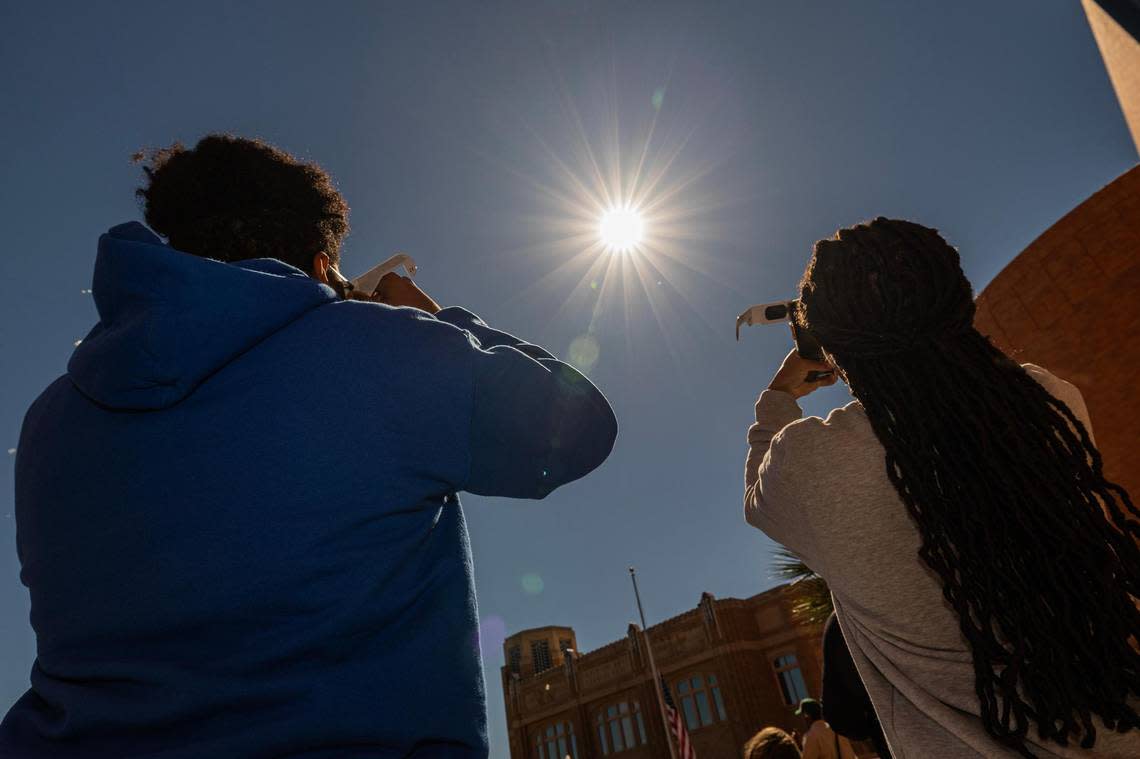Fort Worth ISD students, staff, parents to watch April 8 total solar eclipse on campuses

Students and staff with the Fort Worth Independent School District are gearing up to watch the upcoming total solar eclipse on April 8, when they’ll witness a rare celestial event that won’t be visible from the Dallas-Fort Worth area again for almost 300 years.
The skyward-facing gazes of educators and learners will be short-lived, as the total eclipse will be visible for 2 minutes and 33 seconds starting at 1:40 p.m., but the school day will be filled with lesson plans and activities related to the event, before and after it happens, according to district officials.
Although some smaller school districts in North Texas are closing in observance of the eclipse, Fort Worth ISD is among those staying open while providing a learning opportunity to students. Each campus will have an “eclipse designee” to manage the district-wide event at all its locations.
“Each campus has developed a specific viewing plan that includes both an outdoor supervised viewing area for students with parental permission and an indoor viewing option for those who choose not to participate or do not have permission,” said Cesar Padilla, spokesperson for the school district, noting that those who are staying indoors for the event will watch the NASA livestream.
Parents can join their children in watching the eclipse while following schools’ typical check-in procedures, but they are encouraged to bring their own glasses, Padilla said. Additionally, there will be no excused absences for students who want to watch the eclipse from home or at a different viewing location.
The bulk of glasses provided to the district — 71,250 — are being donated by the Perot Museum of Nature and Science located in Dallas, according to Padilla. Other organizations and companies such as Buc-ee’s, the Houston Museum of Natural Science, Prevent Blindness Texas and the Delta Gamma Foundation are supplying an additional 14,500 glasses for students and district staff.
Elementary, middle and high school students will enhance their understanding of the phenomenon through individual, group and class activities, Padilla said.
Today's top stories:
→ Cameras all over Fort Worth are recording us. Who’s watching?
→ Driver dies when he's ejected in wreck during Fort Worth police pursuit
→ As hospitals struggle to retain staff, one health network bucks trend
🚨Get free alerts when news breaks.
Individual activities include watching informational videos and reading texts about solar eclipses before answering questions or writing reflections of what they’ve learned. Additionally, students will create maps to visualize the eclipse’s trajectory, according to Padilla.
In group settings, students will solve math problems related to the eclipse and its duration of totality or the moon’s distance from Earth. They will also compete while testing their knowledge through online quizzes on platforms like Kahoot or Quizizz and collaborate to build models of the eclipse, including creating electrical circuits to illuminate the sun.
As a class, students will find information about solar eclipses through a scavenger hunt and hone in on the sun’s corona, its outer atmosphere that’s visible during the event, through teacher-led lessons.
“During the eclipse, students will record their observations and discuss their findings as a class, followed by individual reflections on their experiences,” Padilla said. “In some cases, classes may conduct experiments to measure solar energy levels during the eclipse and discuss the results and implications of their findings.”

